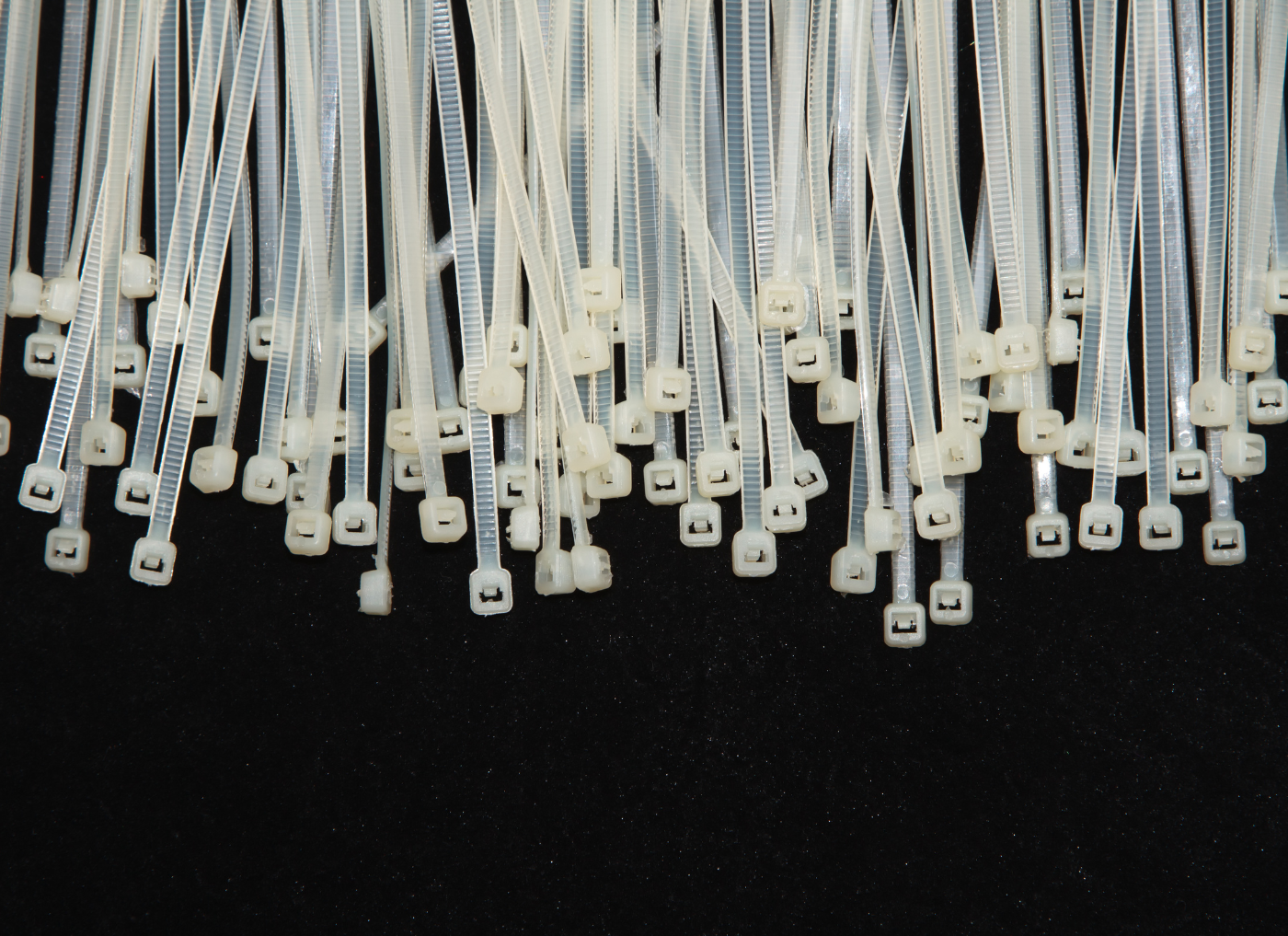on credit orders over $100

The History of Cable Ties
Cable ties, also known as plastic ties or zip ties, have become an essential tool in various industries and households. Their simple yet effective design has revolutionized how we bundle, secure, and organize cables, wires, and other objects. But how did these handy fasteners come to be? In this blog post, we will explore the history of cable ties, from their invention to their evolution into the versatile tools we know today.

How it started…
The story of cable ties begins in the 1950s. The modern cable tie was invented by Maurus C. Logan, an engineer at the electrical company Thomas & Betts. In 1956, Logan was required to visit a Boeing aircraft facility. At the time, aircraft wiring was a difficult job, involving thousands of feet of cabling and wire. The wire was secured with knotted, wax-coated, braided nylon cords, which were manually applied. This process resulted in workers’ hands having thick calluses and deep cuts. Logan was convinced he could find a way to make the task easier for the workers and spent the next two years experimenting with different tools and materials.
Early uses and adoption
In 1958, Logan introduced the first plastic cable tie. The original design features a simple locking mechanism that allowed the tie to be tightened around the cables and then locked in place. This innovation provided a quick and efficient solution for keeping wires organized, particularly in the growing field of electrical engineering. However, it didn't take long for other industries to recognize the benefits of cable ties. As technology advanced and the demand for organized wiring increased, cable ties began to find applications in telecommunications, automotive manufacturing, and the aviation industry.

Evolution of Design & Materials
As the popularity of cable ties grew, so did the variety of designs and materials used in their production. Early cable ties were made from nylon, which provided strength and flexibility. Over the years, manufacturers began experimenting with different materials to enhance performance. Today, cable ties are made from a range of materials, including UV-resistant nylon, stainless steel, and even biodegradable options, catering to various environmental and industrial needs.
Cable Ties from Ferrules Direct
Cable ties have transformed the way we manage cables and other objects. As discussed in this post, their journey from the 1950s to today highlights not only their practicality but the transformation behind their design and materials. At Ferrules Direct, we are proud to offer a large collection of cable ties that cater to the needs of both professionals and DIY enthusiasts. If you have any questions, feel free to contact us!
Miniature Cable Ties
Intermediate Cable Ties
Standard Cable Ties
Heavy Duty Cable Ties
Extra Heavy-Duty Cable Ties
Metal Tooth Cable Ties
Stainless Steel Cable Ties
Metal Detectable Cable Ties
Polypropylene Cable Ties
Nylon Duct Straps
Reusable Cable Ties
Hook and Loop Ties
Identification Cable Ties
Double Loop Cable Ties
Edge Clip Cable Ties
Screw Mount Cable Ties
Clamp Head Cable Ties
Cold Weather Cable Ties
High-Temperature Resistant Cable Ties
Beaded Loop Fasteners
